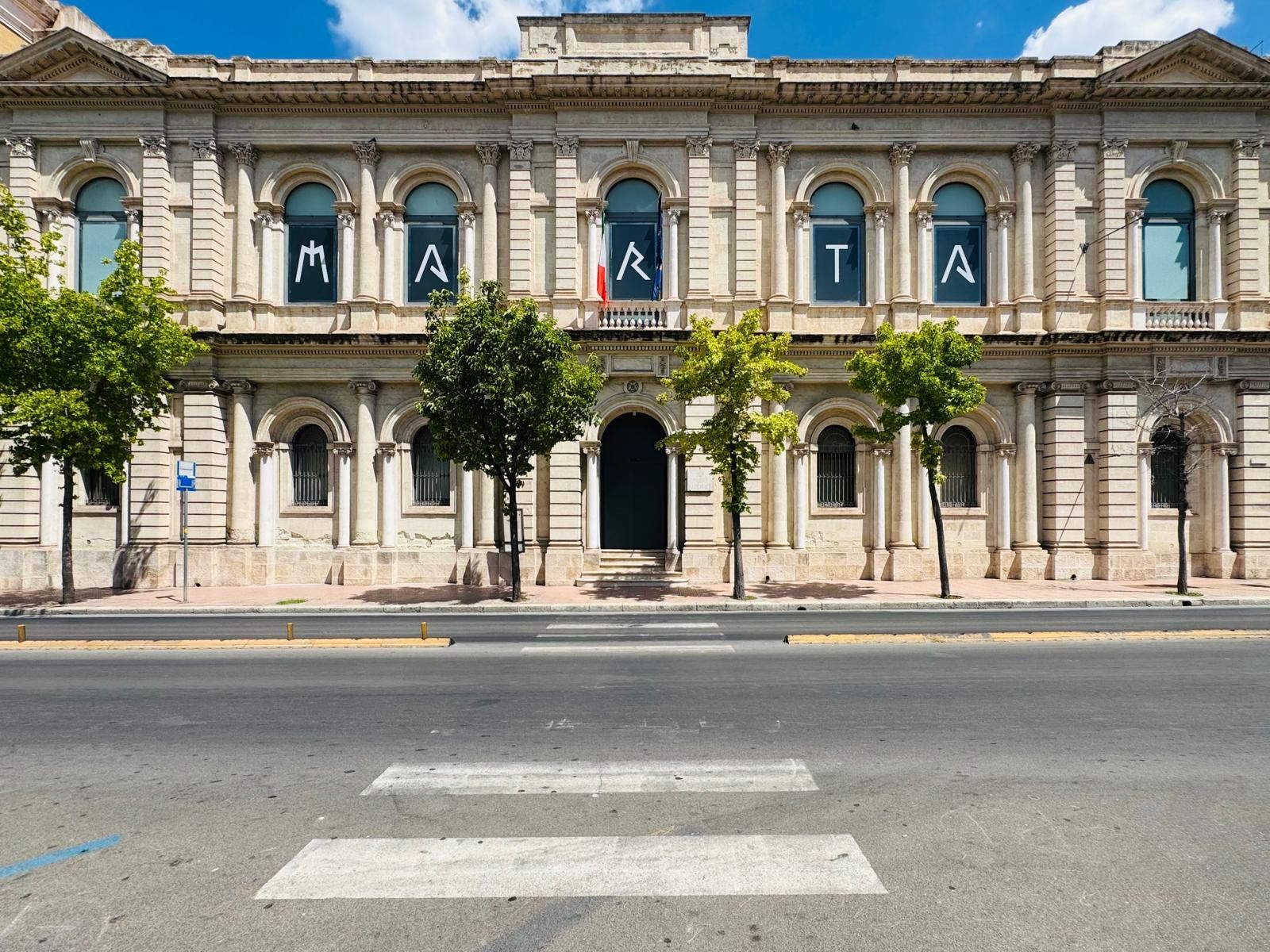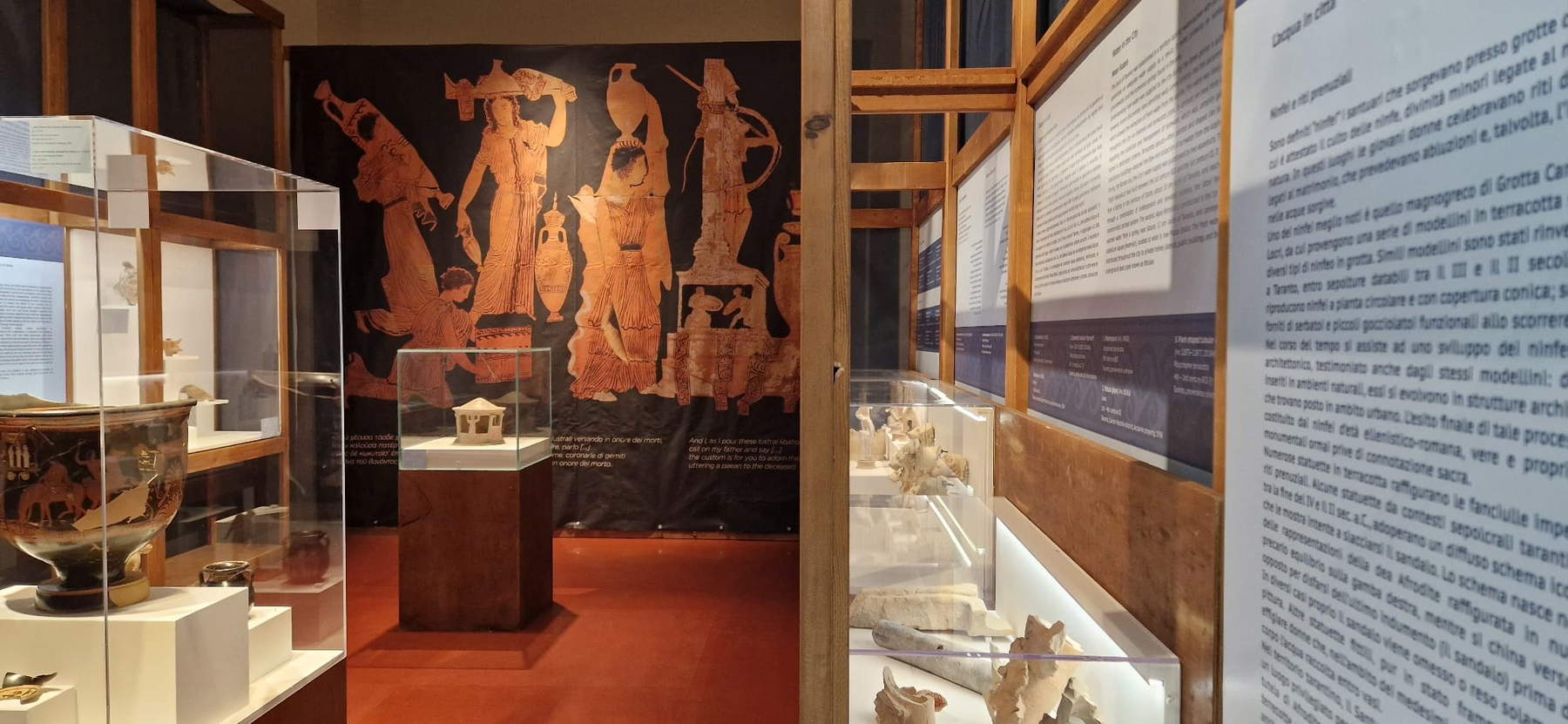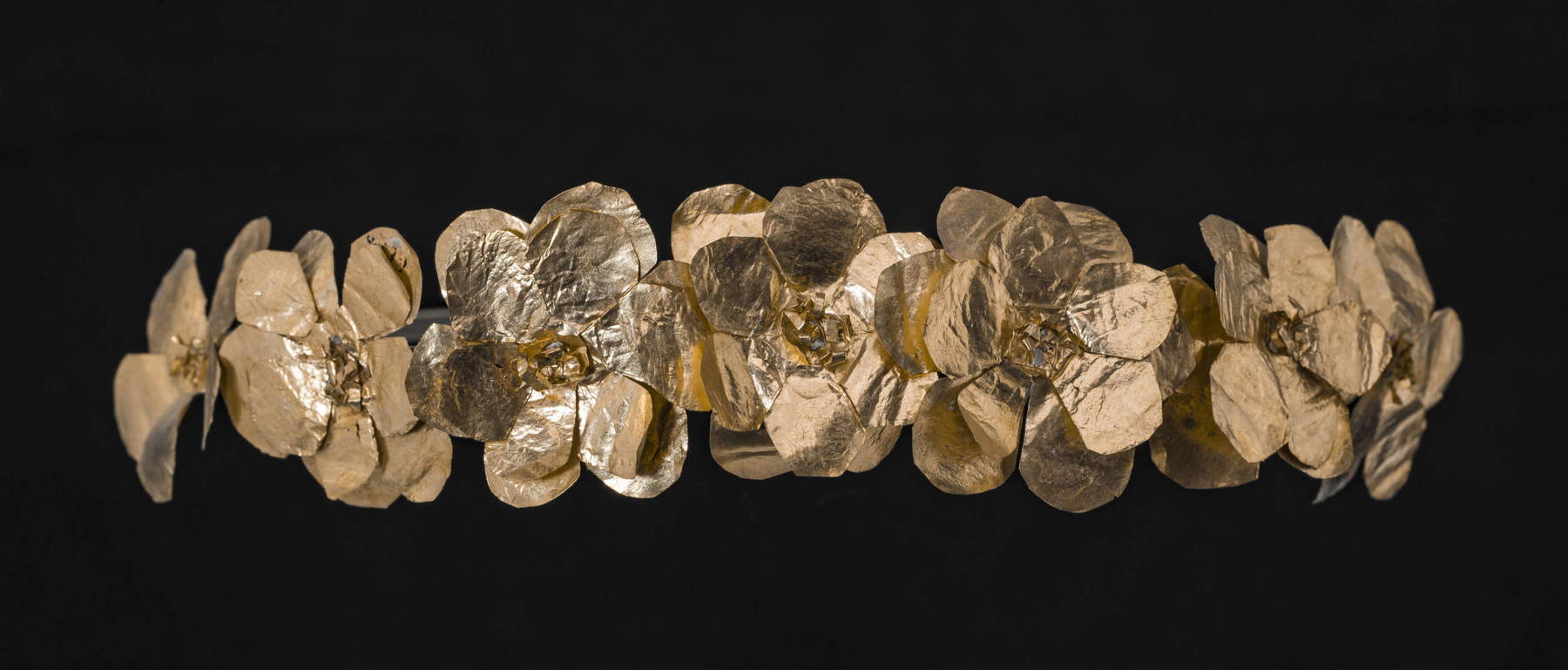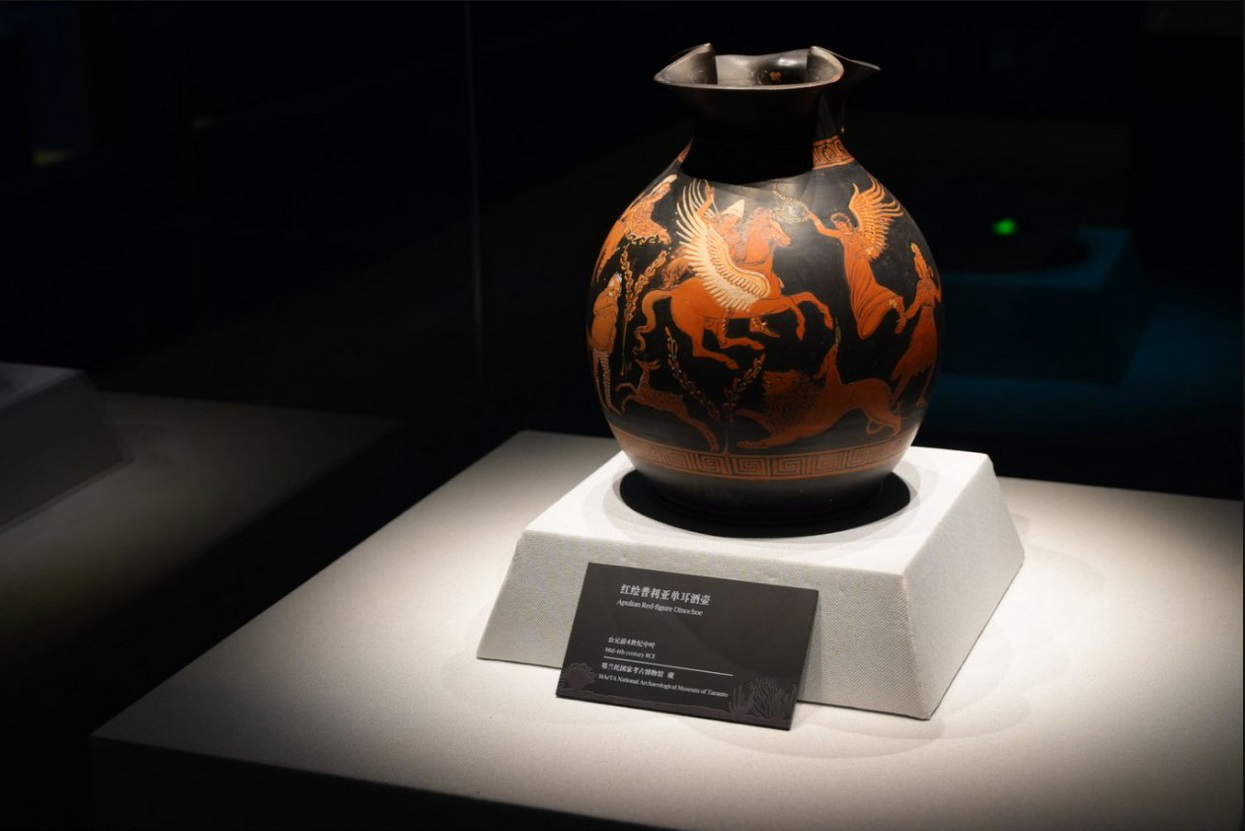Since January 2024, Stella Falzone has been directing the National Archaeological Museum of Taranto, and has brought a strategic vision to transform the MArTA from a place of static conservation into a dynamic and inclusive space at the service of society. After important academic and scientific experiences at international institutions such as the Österreichische Akademie der Wissenschaften and Columbia University in New York, he has taken a leading role in the study and valorization of ancient painting, coordinating research projects in Italy and abroad. Vice-president of the Association Internationale pour la Peinture Murale Antique and president of the Centro Studi Pittura Romana Ostiense, Falzone brings to MArTA a dynamic approach, where the memory of the past is linked with the urgencies of the present. Under his direction, the museum has strengthened its ties with the territory and the international network, promoting exhibitions such as Between the Two Seas in China and new forms of storytelling for the Magna Graecia collection. The MArTA thus becomes a laboratory of ideas and relationships, a constantly evolving place that gives back a voice to the ancient Mediterranean and its living heritage. We therefore interviewed her to let her tell us about her work at the National Archaeological Museum of Taranto. The interview is by Noemi Capoccia.

NC. What was your strategic vision at the beginning of your tenure as director of MArTA and how are you realizing it today?
SF. It will soon be two years of work at the National Archaeological Museum in Taranto. Two years in which the beacon of all our efforts has been the new ICOM (International Council Of Museum) definition approved in 2022, after the UNESCO recommendation on the protection and promotion of museums. At that assembly, it was made clear that the museum, often perceived as a static place where artifacts were kept, had to become an open place, “at the service of society that promotes diversity and sustainability,” with a focus on inclusiveness and accessibility for all kinds of visitors. A territorial garrison of active protection, a place where history, science, and artistic experience are valued, but also a space where society reprograms its future, receives and generates stimuli. Today MArTA is more than ever this, and every exhibition, every conference, every temporary show or initiative rests on that idea of service and enrichment for contemporary society. An ever-changing and ever-evolving place, where stories that until yesterday remained voiceless re-emerge from the deposits.
MArTA holds one of the most important collections in Italy on Magna Graecia civilization. Do you think there are aspects that are still under-emphasized in the museum’s exhibition itinerary and that deserve more attention?
The National Archaeological Museum in Taranto has only one defect: it is very rich. Therefore, visitors often dwell on the showcases that hold the so-called iconic exhibits, the Alteta tomb with its panathenaic amphorae, the crater of the birth of Dionysus, the Ori, the Nutcracker, or recently the new acquisition of the sculptural group of Orpheus and the Sirens; however, there is a risk of missing fascinating and compelling narratives that also return, seemingly in very small details, the testimony of the existence of the men of the past. For this reason, in addition to the proposal of guided tours, we have created audioguides in five languages, which allow the public to organize the visit independently, and thus to stop and delve into the information on individual exhibits, and on the more general themes in which the museum itinerary is divided at will. But it is necessary to emphasize another important aspect that concerns the enhancement of our collection: cyclically we put under the spotlight some works that are already on permanent display (within showcases that restore the original contexts of their discovery), allowing new readings starting from the comparison or thematic association with other finds, and mainly with those currently kept in storage, which very often only for lack of space do not find a place in the halls. This is the recent case, for example, of a terracotta depicting a nude woman at the louterion (ablution vessel), datable to the late 3rd-early 2nd century B.C., normally displayed in a room on the second floor, which in the temporary exhibition "Archè. The Beginning and Water," on display until Feb. 1, 2026, becomes the protagonist of a relationship on the iconographic level with a 5th-century B.C.E. liquid vase(pelike) (normally located in a different room), in which the same scene has been depicted.


What are the main difficulties, or trials, that an archaeological museum (of national importance like MArTA) faces in Italy today?
I think the difficulties that all places of culture experience, between never sufficient resources, staffing constraints, and the challenge to become more and more attractive to the public, without ever derogating on the content of the cultural offer. The MArTA has already won important tests. We have acquired in recent years archaeologists, architects, restoration experts, new reception and enhancement staff even if we always fall short of the numbers of Staff needed; and, above all, we suffer from the isolation of the South. At the Uffizi or the Colosseum, tourists and visitors are on hand, while a person in Taranto has to come specially, is hardly passing through, without an effective connection to the major airports in Puglia, without adequate rail lines. Of course, when the visitor arrives at the Museum, he or she finds a surprising and overwhelming beauty and richness.We are very proud of the high level of appreciation that the Museum receives nationally and internationally, which repays the efforts of all the staff and reinforces the intention to proceed in this direction.
What are the criteria that guide the selection of exhibits to be displayed in the Temporary Art showcase, the large glass case in the museum lobby? How do temporary exhibitions enrich the experience of MArTA visitors?
There is a schedule of temporary exhibitions, the result of a study prepared by our archaeological officers. This study, combined with the work currently underway to digitize all the artifacts in the museum, puts us in a position to have a more detailed view of the entire holdings. Due to issues of space, as mentioned above, the MarTA displays only part of the collection, and so the Temporary Art showcase allows us to open real windows on materials that have remained invisible for so long: artifacts, identified by themes, enter into a more fluid exhibition dynamic, with a more immediate communication consonant with a dynamic space. In this way, themes related to particular times of the year, or current events, also find space, allowing for in-depth analysis and reflection on the themes of diversity and inclusiveness, offering less conventional keys to interpreting an archaeological collection (such as the Temporary Art on the “monsters” and extraordinary creatures of Greco-Roman mythology, organized on the occasion of Halloween). Moreover, let us not forget that inside the MArTA there are other spaces that are used for temporary exhibitions, sometimes even at the same time, as is the case these days, in which our visitors can appreciate in addition to the permanent exhibition path also two exhibitions that will accompany us in the coming months: together with the aforementioned exhibition Archè. The Beginning and Water, until January 6, 2006, it will also be possible to visit the exhibition RARA AVIS Portraits in Bronze from Magna Graecia to the Contemporary made with the goldsmith and sculptor Antonio Affidato.


Do you think that displaying artifacts from museum deposits can stimulate public interest in the history of Apulia and the Mediterranean in different ways than traditional exhibitions?
Anything that contributes to a deeper knowledge of an area contributes to the preservation of heritage (which belongs to everyone), and puts the development and growth of communities on a solid foundation. Recently as the National Archaeological Museum of Taranto we have returned attention and visibility to the territories of origin of many of the treasures housed at MArTA. I’m talking about the coin treasures found in Salento (Nociglia and Specchia), the Zeus of Ugento, and the treasures from the trousseau of the Daunian princess Opaka Sabaleida, which, after a series of stops in the prestigious venues of the Italian Cultural Institutes of Latin America, returned to Apulia to christen the birth of the new layout of the National Archaeological Museum of Canosa, and then returned to Taranto. This is the real value, which shows the vitality of this part of the Mediterranean starting from the past and turning its gaze to the future, giving MArTA the role that best suits it: that of being a museum of all Apulian people, which speaks of the history not only of the metropolis that was Taranto, but also of ancient Apulia and the Mediterranean.
She was curator of the exhibition Between the Two Seas, on display at the Museum of the South China Sea in Hainan from March 20 to June 15, 2025. From Apulia, 131 artifacts were sent to China from the National Archaeological Museum of Taranto (MArTA), the Regional Directorate of Museums of Apulia, with the Archaeological Park and National Museum “Giuseppe Andreassi” in Egnazia, the Soprintendenza Archeologia Belle Arti e Paesaggio for the provinces of Brindisi and Lecce with the Ribezzo Museum in Brindisi and the Castromediano Museum in Lecce, and the Soprintendenza Nazionale per il Patrimonio Culturale Subacqueo. What was the concrete quid pro quo for the operation and what cultural reasons justified it?
As a first thing, given the very high number of visitors to the exhibition in Hainan (more than 200,000 of whom 9,000 in the first weekend of the exhibition) I can say that with this important initiative we have ignited the attention of a very large audience, often particularly young people, interested in the culture of the Greco-Roman world: our works played the role of “ambassadors” of Italian culture, representing Italian cultural institutions, first and foremost the Ministry of Culture, within a project that saw significant synergies between different entities operating in the same territory. Regarding the issue of cultural diplomacy, I believe that a good channel of relations has been opened with Chinese museums, which I am sure in the coming months can bring further important results both on the cultural exchange front and on the tourist incoming front.
In your opinion, what should be the limits of similar initiatives, considering the difference between lending works from storage or during the closure of a museum and the risk, on the other hand, of temporarily depriving oneself of the most well-known masterpieces?
While taking into account the need for constant enhancement of the permanent collection (through new readings and specific insights into the works, thematic tours, etc.), there is no doubt that the success of museums today is decreed by a well-established trend related to temporary exhibitions. In the case of the exhibition in China, the MArTA has chosen to enhance predominantly exhibits from the deposits, which are of excellent interest and splendid workmanship, allowing them an important visibility at the international level as well. In the exhibition organized this spring at MArTA and dedicated to the figure of Penelope, we hosted in our halls paintings, sculptures, reliefs, incunabula, prints and testimonies from numerous Italian and foreign museums and private collections. Among the exhibits in the exhibition was the skyphos of the Painter of Penelope from Chiusi. The loan of that marvelous find was the result of a cultural exchange agreement with the National Etruscan Museum of Chiusi, which brought to the Tuscan municipality “our” pelike attributed to the Painter of Darius (340-330 B.C.), which immortalizes a lesser-known episode, that of the reconciliation between Andromeda and her parents, Cassiopeia and Cepheus. This is not a work of subtraction, but a work of multiplication of beauty and knowledge, which today can become a seed of growth the museums of different territories both in Italy and around the world.

The museum is increasingly recognized as a tourist attractor for Taranto and Apulia. What collaborative projects with the area are currently underway?
The Museum represents a reference for the Taranto community, and together with the institutions in the area, but also with the world of associations and the so-called third sector through a constant interlocution with all the subjects in the field, it intends to promote the tourism development of the city. The Museum is open on hot summer Sundays, for example, and welcomes cruise passengers who disembark in a city, which is often deserted. Beyond the already existing collaborations, I believe that more incisive coordination actions would be needed, the creation of a control room to develop joint projects for welcoming and promoting tourism, starting with structural interventions to solve the thorny transportation situation affecting Taranto and its territory.
Are new partnerships with foreign institutions planned in the future?
We currently have numerous scientific collaborations in place with national and international research institutions, with the aim of fostering both research on MArTA’s collection by external Researchers and increasing knowledge for the purpose of the study and enhancement of the works by the Museum itself.
In your opinion, what future awaits archaeology in relation to the contemporary world and what role could a museum like the MArTA play ?
The world of archaeology is experiencing a phase of renewal, influenced both by the use of new technologies and by a growing attention to the theoretical and social aspects of research. Concepts such as that of public archaeology, which aims to involve communities in the understanding and appreciation of heritage and research results, lead to rethinking the role of archaeology in society, not only as a tool for studying the past, but also as a means of understanding the present and planning for the future. Indeed, the method of archaeological research offers effective tools for building new scenarios for research and interdisciplinary dialogue, and can be highly topical. The ancient object can easily enter the relationship with the contemporary world through a thousand ways: starting from the technique, the material, the context of use and discovery, through the evolution of human-inhabited landscapes, one can create a thousand plots with the evidence of the contemporary, one can explore the similarities and differences between the ancient and the modern mentality. What links the prehistoric Venuses in worked bone from Parabita, and the painted tapestries by artist Paolo Troilo, housed in a temporary exhibition at MArTA? A common theme: homage to the mother, goddess and/or woman, beyond the limits of time, to discover how much of deep human nature, across the millennia, turns out surprisingly unchanged in artistic creation.
Warning: the translation into English of the original Italian article was created using automatic tools. We undertake to review all articles, but we do not guarantee the total absence of inaccuracies in the translation due to the program. You can find the original by clicking on the ITA button. If you find any mistake,please contact us.